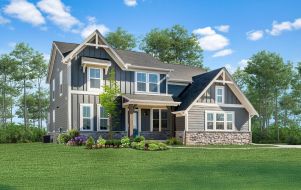Are Ancient Mayan Temples Earthquake Proof? 5 Amazing Strategies Pre-Columbian Builders Used

Pre-Columbian builders used incredible construction tactics, and some of their structures are still surviving today. A 1976 earthquake that devastated a large part of Guatemala did little to nothing to the structure, prompting the question, 'Are ancient Mayan temples earthquake-proof?'
Are Ancient Mayan Temples Earthquake Proof?
In 1976, a powerful 7.5 magnitude earthquake struck Guatemala, claiming 23,000 lives and causing extensive damage. Originating from the Motagua Fault, it reduced numerous adobe houses to rubble. Strangely, the ancient Maya city of Tikal remained unscathed despite the quake's force, puzzling locals. The city's limestone structures, notably its iconic pyramids, survived intact due to several ancient building strategies involving location, structure, and materials.
While the 1976 disaster devastated much of Guatemala, Tikal's resilience showcased the Mayans' sophisticated architectural techniques, preserving their monuments amidst widespread destruction.
5 Amazing Strategies in Pre-Columbian Architecture
Ancient migrations beyond North America led to the establishment of pre-Columbian cultures in Mexico, Central America, and South America. The Aztec, Maya, and Inca civilizations, thriving before Columbus' arrival, left behind intricate artifacts and durable structures. Tikal, in northern Guatemala near Belize, bloomed between 600 and 900 C.E. as a Maya pinnacle.
With over 4,000 mostly unexplored buildings, the city showcased colossal pyramids, elaborate palaces, and courts for the traditional Maya ball game, exhibiting advanced architectural and cultural richness. Maya kings' palaces, still standing, contrast with lost wooden homes, highlighting societal distinctions.
Here are 5 amazing strategies used by pre-Columbian builders:
1. Site Selection, Choosing a Proper Location
Maya architecture's durability owes partly to strategic location choices in safe areas, shielded by swampland from severe natural disasters. Despite lacking precious metals, the Maya capitalized on diverse resources: limestone for construction, obsidian for tools, and salt. Additionally, the environment offered prized treasures like jade, quetzal feathers for noble attire, and marine shells used ceremonially and in warfare.
This resourceful utilization of natural elements contributed significantly to Maya society's resilience and cultural richness.
2. Proper Urban Planning
Maya urban planning featured plaza-centered cities, with diverse structures around a central plaza and irregularly positioned buildings. This layout accommodated the tropical forest's irregular, flood-prone terrain, strategically placing important structures on higher ground to avoid floods and dampness. City centers housed temples, palaces, and ball courts, surrounded by residential areas arranged outwardly, linked by stone walkways.
Later, for defense, cities were constructed on elevated hills, fortified with high walls. The Maya's meticulous urban design balanced protection from flooding while optimizing defense against natural elements like rain and earthquakes.
3. Analysis and Know-How
Maya architecture durability stems from engineering expertise. Their pyramids' stability, akin to Roman domes, relies on larger, heavier layers atop one another, preventing collapse, as found in a 2020 analysis.
Also Read : Ukraine Uses 3D Printer On-Site For the First Time to Build 4000-FT2 Children's School in Just 4 Days
4. Working With Local Materials
Relying on local resources, the Maya constructed buildings using limestone fortified with lime pyrotechnology. By heating limestone to high temperatures, they produced durable quicklime, hardening upon exposure to CO2. Research from 2018 indicates the Maya mastered this technique around 1100 B.C.E., evident in Tikal's resilient structures enduring tropical conditions for centuries.
Additionally, analyzing Copán's ruins, experts discovered Maya builders incorporated sap from chukum and jiote trees into their quicklime, enhancing the lime plaster's strength, a technique passed down through indigenous knowledge.
5. Continuous Improvement
Ancient architecture involved experimental elements, with some ingredients used purposefully while others were trial-and-error. Unlike Egyptian pyramids that remained unchanged, Maya structures underwent continual renovation and remodeling for practical and ideological reasons.
Corbel vaulted arches were employed in pyramid interiors, resulting in less stable structures. Successive rulers layered and filled rooms, leaving dated clues for archaeologists. Renovations signified authority and honored predecessors, keeping buildings active. When remodeling ceased, structures often fell into disuse or were buried to erase previous rulers' legacies. Sometimes, new pyramids were built atop older ones, revealing layers of history upon excavation.













